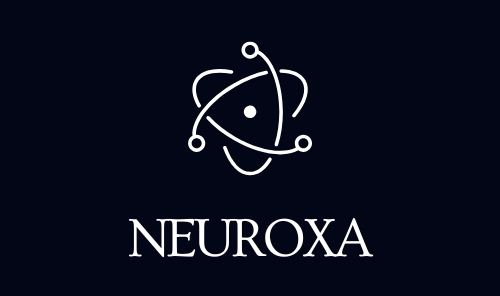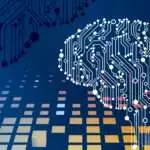The rise of Artificial Intelligence (AI) has sparked intense debate: is it a job destroyer or a job creator? This question directly impacts global unemployment rates, with economists and policymakers grappling with scenarios ranging from mass technological unemployment to a boom in new, AI-driven roles.
In 2025, the reality is nuanced: AI is not causing widespread, sudden mass unemployment, but it is profoundly reshaping the nature of work. While some roles are being automated, others are being augmented, and entirely new categories of jobs are emerging. The key challenge for governments, businesses, and individuals is to adapt to this rapidly evolving landscape, focusing on reskilling and strategic investment to manage the transition effectively.
1. 📉 Job Displacement: The Automation of Routine Tasks
The most visible and often feared impact of AI on unemployment is the displacement of jobs, particularly those involving routine, repetitive, and predictable tasks. AI excels at these functions, leading to efficiency gains that reduce the need for human labor in certain sectors.
Sectors and Roles at Risk
| Sector | Roles Most Affected (2025) | AI Application | Expected Impact on Employment |
| Manufacturing | Assembly line workers, Quality control inspectors | Robotic process automation, Vision AI for defect detection | Continued decline in manual labor roles, shift to maintenance. |
| Administrative Support | Data entry clerks, Customer service reps (tier 1), Transcriptionists | GenAI chatbots for FAQs, Automated data processing, Voice-to-text | Significant reduction in entry-level, rule-based tasks. |
| Retail & Hospitality | Cashiers, Inventory managers, Some food preparation roles | Automated checkouts, AI-driven inventory optimization, Robotic kitchens | Decline in front-line, transactional roles. |
| Transportation | Truck drivers, Delivery personnel | Autonomous vehicles (long-term projection) | Potential for substantial displacement as technology matures. |
The World Economic Forum’s 2025 Future of Jobs Report estimates that 85 million jobs globally could be displaced by AI by 2030 due to automation. However, this is often paired with an even larger number of jobs created, highlighting the dynamic nature of this shift. While unemployment rates may not skyrocket immediately due to AI, specific communities and demographics heavily reliant on these routine tasks will experience significant disruption, necessitating targeted social safety nets and reskilling programs.
2. 🤝 Job Augmentation: Enhancing Human Capabilities
While some jobs face displacement, a more prevalent trend in the short to medium term is job augmentation. Here, AI doesn’t replace human workers but enhances their productivity, allowing them to perform tasks more efficiently, accurately, and creatively. This leads to increased demand for “AI-literate” human workers.
AI as a Co-Pilot, Not a Replacement
| Sector | Augmented Roles (2025) | AI Enhancement | Outcome |
| Healthcare | Doctors, Radiologists, Researchers | AI for diagnostics, Drug discovery, Predictive analytics | Faster, more accurate diagnoses; personalized treatment plans. |
| Finance | Financial analysts, Traders, Accountants | AI for market prediction, Fraud detection, Automated reporting | Improved risk management, deeper insights, reduced error rates. |
| Marketing | Content creators, SEO specialists, Strategists | GenAI for copywriting, Image generation, Predictive ad targeting | Higher content velocity, personalized campaigns, better ROI. |
| Software Dev. | Coders, Developers, QA testers | AI for code generation, Debugging, Automated testing | Faster development cycles, higher code quality, focus on complex problem-solving. |
McKinsey & Company’s 2025 analysis highlights that jobs requiring social, emotional, and high-cognitive skills are most likely to be augmented. This drives a demand for a workforce that can collaborate effectively with AI, leverage its insights, and apply human judgment to its outputs. Unemployment rates among these augmented professionals are likely to remain low or even decrease due to increased demand and productivity.
3. 🚀 Job Creation: New Roles for the AI Economy
The advent of new technologies has historically led to the creation of entirely new industries and job categories, and AI is no exception. The “AI economy” is already generating roles that didn’t exist a decade ago, addressing the unique demands of developing, deploying, and managing AI systems.
Emerging AI-Driven Job Categories
- AI Trainers/Prompt Engineers: Specialists who design, refine, and optimize prompts for generative AI models to achieve specific, desired outputs. These roles are critical for ensuring AI systems deliver value in diverse business contexts.
- AI Ethicists/Auditors: Professionals who assess AI systems for bias, fairness, transparency, and compliance with regulations like the EU AI Act. Their role is to ensure AI is developed and deployed responsibly.
- Robotics Engineers/Technicians: As automation grows, there’s increasing demand for individuals who can design, install, maintain, and troubleshoot robotic systems in manufacturing, logistics, and other sectors.
- Data Scientists/ML Engineers: Experts who collect, clean, and analyze data to train machine learning models, and then deploy and manage these models in production environments.
- AI UX/UI Designers: Designers specializing in creating intuitive and effective interfaces for human interaction with AI systems, ensuring user-friendly experiences.
The IMF’s 2025 report emphasizes that while AI may displace low-skill jobs, it is a powerful engine for high-skill job creation. The challenge is ensuring that educational and training systems can produce graduates with these specialized skills at the pace required by technological advancement. The net effect on overall unemployment rates will largely depend on the speed and effectiveness of these reskilling initiatives.
4. 📈 The Net Impact on Unemployment Rates: A Dynamic Transition
The overall impact of AI on national unemployment rates is currently a subject of intense research, but the consensus is that the picture is far more complex than a simple rise or fall. It’s a period of dynamic transition, characterized by significant shifts in labor demand and supply.
Factors Influencing Net Unemployment
| Factor | AI’s Influence | Impact on Unemployment Rate |
| Reskilling & Upskilling | AI is accelerating the need for continuous learning. | Mitigates rise: Faster adaptation of the workforce to new roles. |
| Economic Growth | AI drives productivity gains and creates new markets. | Lowers rate: Expands the overall economic pie, generating demand for labor. |
| Policy & Investment | Government investment in AI R&D, education, and social safety nets. | Stabilizes rate: Supports workers through transitions and fosters innovation. |
| Demographic Shifts | Aging populations in some regions may offset AI displacement. | Complex impact: AI fills labor gaps in aging societies, but might displace younger workers in others. |
| Digital Divide | Unequal access to technology and training. | Exacerbates inequality: Higher unemployment for those without AI skills. |
The OECD’s 2025 analysis suggests that countries with proactive policies for education, training, and social protection are better positioned to navigate the AI transition with minimal increases in structural unemployment. While unemployment rates might see temporary fluctuations in specific sectors or regions, the long-term trend is more likely to be defined by a recomposition of the labor force rather than a dramatic, sustained surge in overall joblessness. The challenge is ensuring a just transition, where the benefits of AI-driven productivity are shared broadly, and displaced workers are given clear pathways to the jobs of the future.
The debate over AI and unemployment will continue to evolve, but one truth remains clear: the future of work will be defined by human-AI collaboration. The goal for societies is to harness AI’s potential for productivity and prosperity while proactively addressing the challenges of job transition, ensuring no worker is left behind.
Source List 📈
- World Economic Forum (WEF): Future of Jobs Report 2025 (Key data on job displacement vs. creation, reskilling needs)
- McKinsey & Company: Jobs Lost, Jobs Gained: Workforce Transitions in an Age of Automation 2025 (Analysis of job augmentation vs. full displacement)
- IMF (International Monetary Fund): AI and the Future of Work: A Global Perspective 2025 (Macroeconomic impact and policy recommendations)
- OECD (Organisation for Economic Co-operation and Development): AI, Employment and Skills in 2025 (Focus on high-skill demand and low-skill vulnerability)
- Brookings Institute: Automation and Artificial Intelligence: How machines are affecting workers and the economy (Long-term historical context and projections)
- PwC: AI and the Workforce: Opportunities and Challenges for 2025 (Sector-specific impacts and productivity gains)








